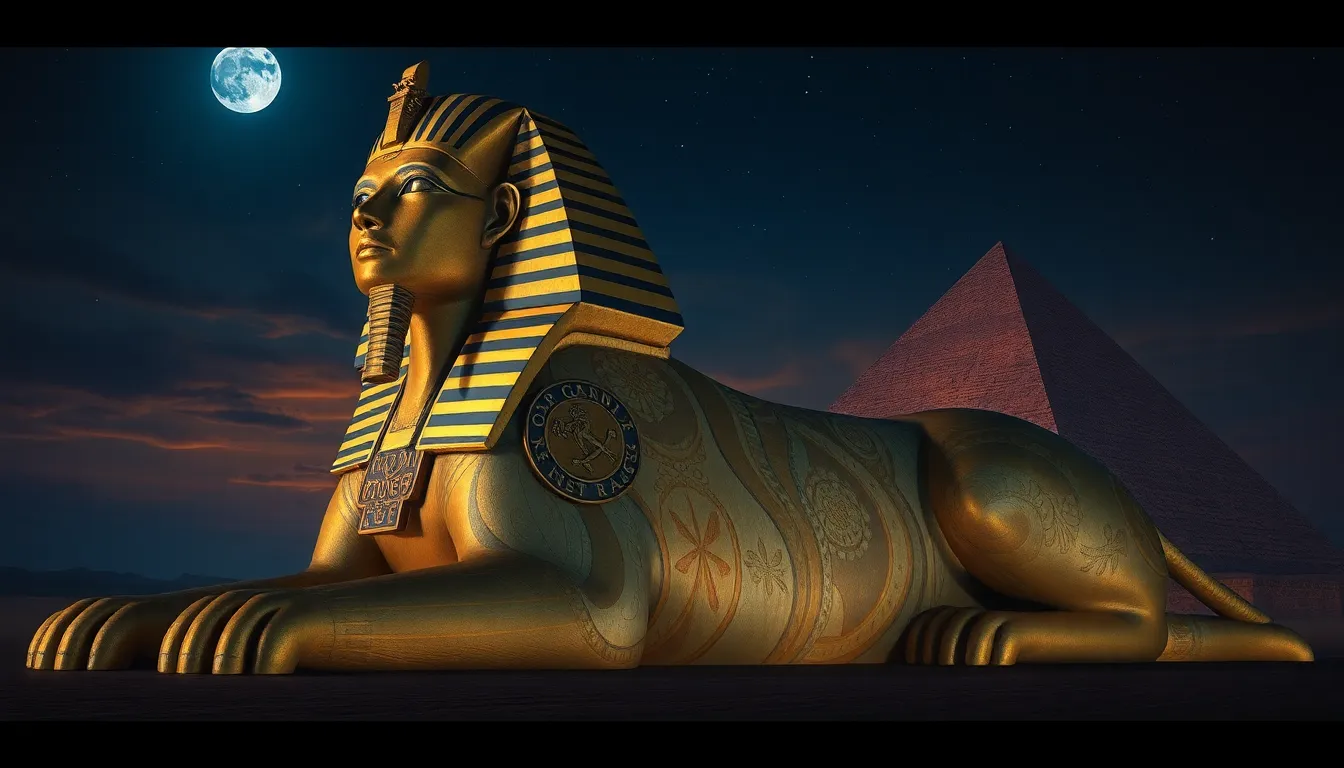The Legend of the First Sphinx: Guardian of Mysteries
I. Introduction
The Sphinx, a creature with the body of a lion and the head of a human, holds a significant place in both mythology and history, particularly within ancient Egyptian culture. Its enigmatic presence has captivated the imagination of people across generations. The First Sphinx, in particular, is revered as a guardian of profound mysteries, symbolizing the intersection of knowledge, power, and the divine.
This article aims to explore the origins, symbolism, and enduring legacy of the First Sphinx, shedding light on its critical role in ancient cultures and its continued relevance in modern times.
II. Origins of the Sphinx Myth
The Sphinx myth has deep historical roots that can be traced back to several ancient civilizations. Its origins are often contextualized within the broader scope of human civilization, where the Sphinx emerged as a symbol of power and mystery.
- Historical Context: The earliest representations of the Sphinx can be found in ancient Egypt, where it served as a protective figure, often positioned at the entrances of temples and tombs.
- Evolution Across Cultures: Over time, the Sphinx legend evolved, influencing and being influenced by other cultures, notably the Greeks, who associated the Sphinx with riddles and fate.
- Connection to Mythology: In Egyptian mythology, the Sphinx is linked to the sun god Ra and the pharaohs, while in Greek mythology, it is tied to the story of Oedipus.
III. The Symbolism of the Sphinx
The Sphinx embodies a rich tapestry of symbolism, particularly in its dual representation of human and animal forms. This duality has various interpretations that resonate with different cultural narratives.
- Representation of Duality: The combination of the lion’s strength and the human intellect symbolizes the balance between power and wisdom.
- Guardian of Knowledge: The Sphinx is often seen as a protector of sacred knowledge and mysteries, challenging those who seek to understand.
- Interpretations of the Riddle: The riddle posed by the Sphinx serves as a metaphor for the challenges one must overcome to attain wisdom.
IV. The First Sphinx and Its Creation
Legends surrounding the creation of the First Sphinx are steeped in mythology, often involving divine intervention and the craftsmanship of ancient artisans.
- Legends of Creation: According to myths, the First Sphinx was created by the god Khafre, who wanted a guardian for the Giza plateau.
- Role of Gods and Deities: Deities such as Hathor and Thoth are often mentioned in connection with the Sphinx, believed to have imparted wisdom and protection.
- Artistic Depictions: Archaeological evidence, including carvings and statues, reveals the reverence ancient Egyptians had for the Sphinx.
V. The Riddle of the Sphinx
The most famous aspect of the Sphinx is undoubtedly its riddle, which has intrigued and puzzled many throughout history.
- Description of the Riddle: The Sphinx famously asked travelers: “What walks on four legs in the morning, two legs at noon, and three legs in the evening?”
- Cultural Significance: The riddle illustrates the journey of life and the transitions we undergo, making it a powerful metaphor in various philosophical discussions.
- Interpretations Over Time: While Oedipus famously answered “Man” to the riddle, interpretations have varied, suggesting deeper meanings related to existence and mortality.
VI. The Sphinx as a Guardian of Mysteries
The Sphinx’s role extends beyond mere physical presence; it is also considered a spiritual guardian, protecting sacred knowledge and treasures.
- Protection of Sacred Sites: The Sphinx is believed to guard the pyramids and other significant monuments, ensuring that only the worthy may enter.
- Myths of Hidden Treasures: Many legends speak of treasures hidden beneath the Sphinx, waiting for the brave or wise to uncover them.
- Connection to the Afterlife: The Sphinx is often associated with the afterlife, symbolizing the transition from the physical world to the spiritual realm.
VII. The Legacy of the First Sphinx
The influence of the First Sphinx transcends centuries, leaving an indelible mark on literature, art, and modern culture.
- Influence on Literature and Art: The Sphinx has inspired countless works of art and literature, from ancient texts to contemporary novels.
- Modern Interpretations: Artists and writers today reinterpret the Sphinx through various lenses, often exploring themes of mystery and knowledge.
- Contemporary Culture: The Sphinx continues to appear in films, games, and popular media, maintaining its status as a symbol of enigma and allure.
VIII. Conclusion
The First Sphinx stands as a monumental symbol of knowledge, mystery, and the divine throughout history. Its dual nature as a guardian and a challenger reflects the complexities of human existence and the eternal quest for understanding.
As we reflect on the legacy of the First Sphinx, we recognize its enduring significance in shaping human thought and culture. The mysteries it guards continue to inspire curiosity and exploration in our quest for knowledge.
Ultimately, the Sphinx serves as a reminder of the mysteries that lie at the heart of existence, urging us to seek out wisdom and embrace the unknown.




